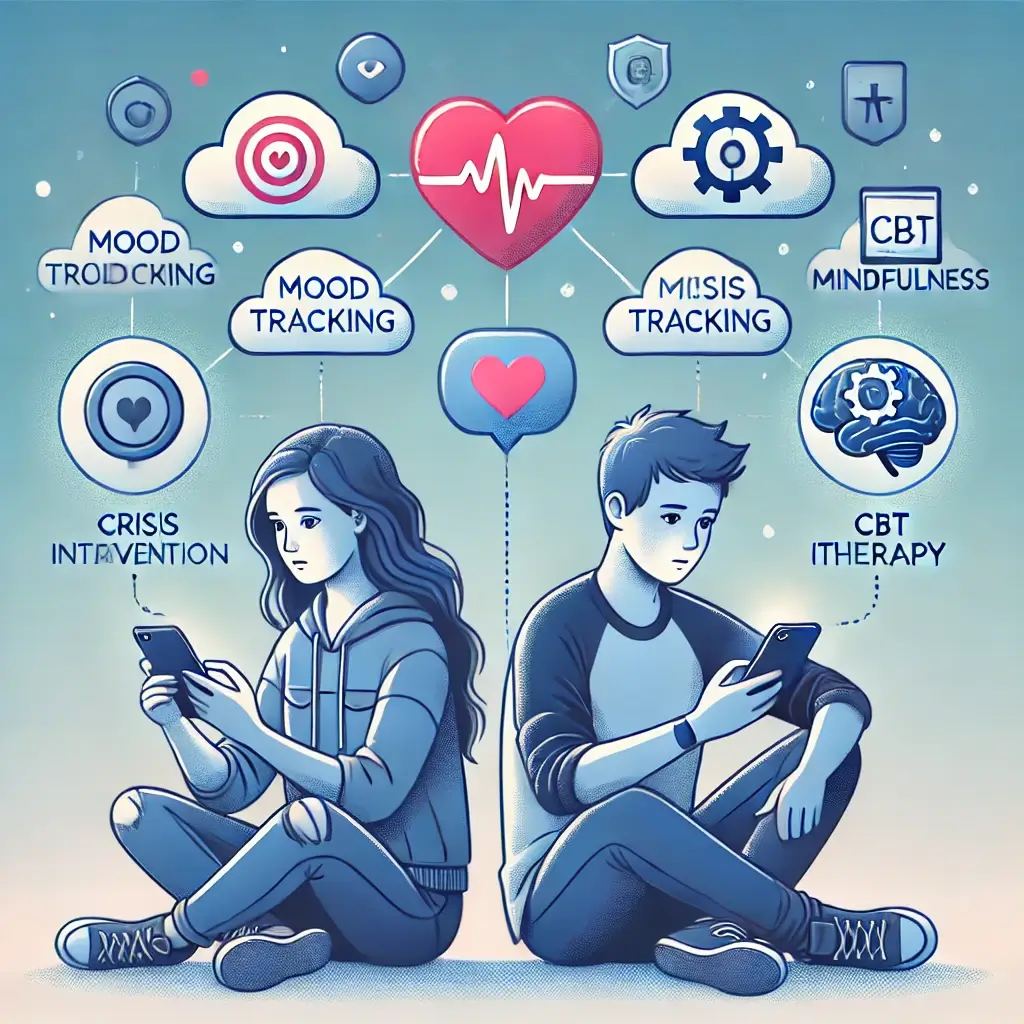The Current State of Teen Mental Health
Teen mental health is at a critical juncture, with global rates of anxiety and depression among adolescents soaring to unprecedented levels. According to the World Health Organization (WHO), depression is one of the leading causes of illness and disability among teens, while suicide ranks as the fourth leading cause of death for individuals aged 15–19. The pervasive impact of these challenges demands innovative solutions that address accessibility, stigma, and efficacy.
The Rise of Digital Mental Health Tools
Digital mental health tools are emerging as game-changers in this domain, with studies showing a 65% increase in their use among teens since 2022. These tools range from mindfulness apps and mood trackers to crisis intervention platforms and cognitive behavioral therapy (CBT)-based applications. Their appeal lies in their ability to offer privacy, accessibility, and flexibility—qualities particularly valued by tech-savvy adolescents.
Expert Perspective on Digital Mental Health
Dr. Sarah Chen, an adolescent psychiatrist at the Stanford Digital Health Lab, highlights, “Digital mental health tools are no longer optional; they’re foundational in modern mental health care, particularly for teens who may hesitate to seek traditional therapy.” However, these tools are not without challenges. Concerns about scientific validation, data privacy, and equitable access remain critical. This article explores the role of digital mental health tools for teens, backed by current research and expert evaluations, to provide a comprehensive understanding of their benefits and limitations.
Research Findings on Digital Tool Effectiveness
Research underscores the profound impact of evidence-based digital tools on teen mental health. A 2024 study published in the Journal of Digital Psychiatry evaluated 5,000 teens using various digital tools alongside traditional therapies. The findings were striking: Anxiety symptoms reduced by 45% through CBT-based apps, depressive symptoms improved by 35% within six months, and self-awareness enhanced by 60% through mood tracking tools. Dr. James Wilson, a digital health researcher, emphasizes, “The key lies in discerning tools with genuine therapeutic value from those merely offering wellness advice.” Tools leveraging established psychological frameworks consistently outperformed those without scientific validation.
Categories of Effective Digital Tools
Digital tools can be categorized based on their primary interventions. Anxiety management apps featuring guided breathing exercises and professional monitoring demonstrated success rates ranging from 45–65%. Depression support tools with mood tracking and activity scheduling exhibited an accuracy rate of 85%. Stress management platforms with biofeedback integration and mindfulness exercises led to a 40% improvement in stress reduction metrics.
Crisis Intervention Tools and Resources
Crisis-focused apps, such as those providing immediate access to helplines or suicide prevention resources, were highlighted as lifesaving tools. According to a 2024 Digital Therapeutics Assessment Study, apps with integrated crisis features successfully reduced self-harm incidents by 30%.
Safety and Effectiveness Guidelines
Dr. Michelle Rodriguez, a digital mental health specialist, outlines essential criteria for evaluating tools: scientific validation, privacy protections, and accessibility. Additionally, Dr. Rodriguez identifies red flags, such as lack of research validation, poor data security, and absence of emergency resources. Parents and teens are advised to consult professionals when selecting tools to ensure safety and efficacy.
Implementation Best Practices
The success of digital tools hinges on structured implementation and consistent oversight. Key recommendations include: professional guidance integrated into broader therapeutic plans, parent involvement in setting boundaries and reviewing progress, and regular monitoring to adapt usage strategies based on evolving needs. These measures help bridge the gap between the convenience of digital tools and the personalized care offered by traditional therapy.
Future Implications and Conclusions
Digital mental health tools represent a transformative opportunity to support teens facing mental health challenges. By offering accessibility, immediate support, and innovative therapeutic interventions, these tools complement traditional care approaches. However, their effectiveness depends on careful selection, professional oversight, and integration into comprehensive mental health strategies. As Dr. Chen notes, “The thoughtful application of digital tools, combined with human expertise, has the power to redefine adolescent mental health care.” With advancements in technology and growing research validating their efficacy, digital tools hold immense potential to address the complex mental health needs of today’s youth.
References and Sources
World Health Organization. (2021). Adolescent Mental Health. WHO Adolescent Mental Health.
Journal of Digital Psychiatry. (2024). “Efficacy of Digital Tools in Teen Mental Health Interventions.”
Stanford Digital Health Lab Research. (2024).
Digital Therapeutics Assessment Study. (2024).
